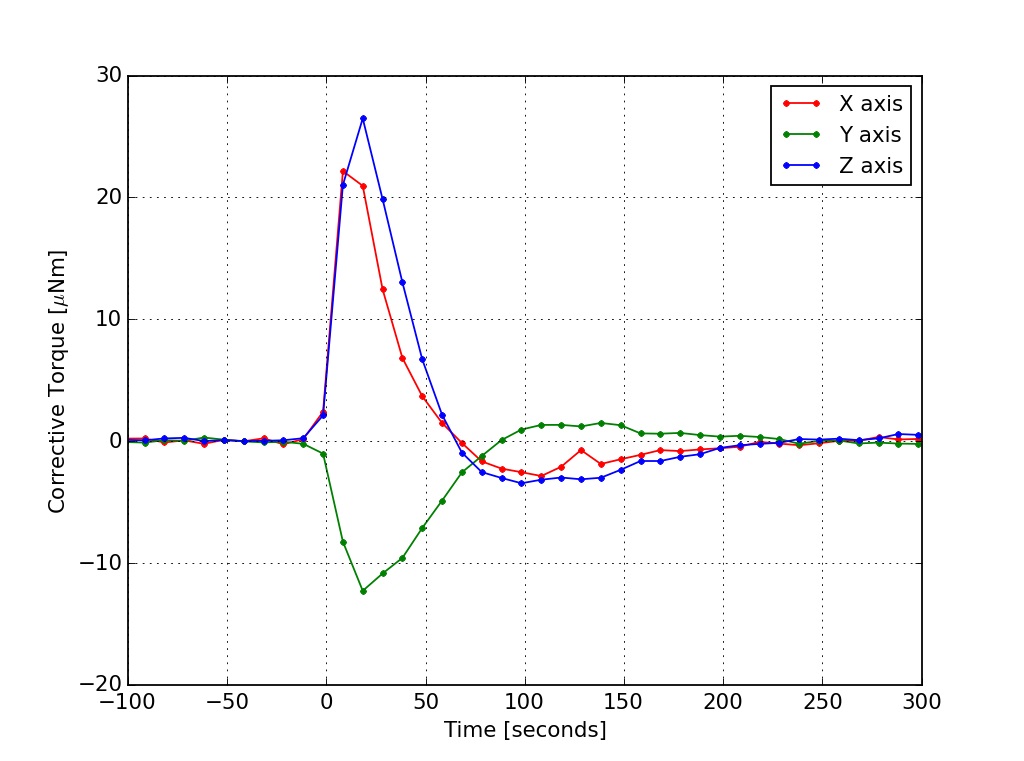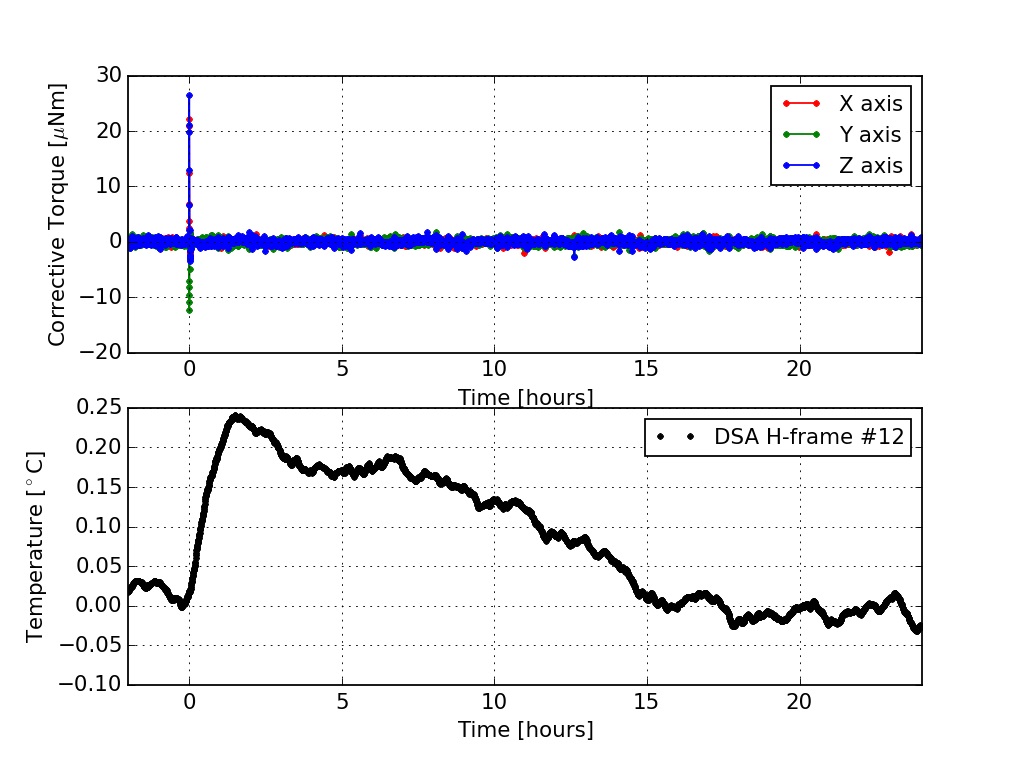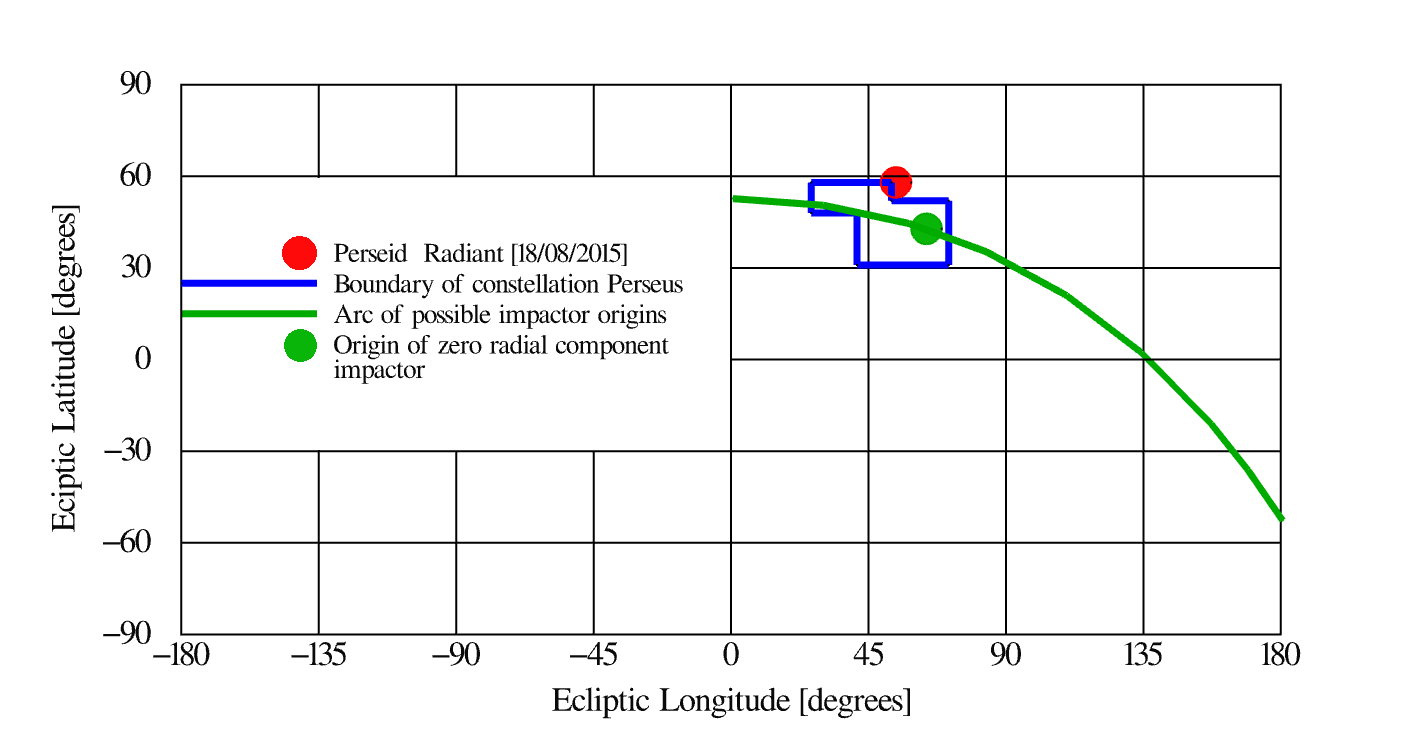IoW_20160106 - Gaia
Image of the Week |
|||
Gaia intersects A Perseid Meteoroid |
|||
 |
|||
| Figure 1: Corrective torques applied to recover spacecraft attitude after a meteoroid strike. | |||
|
In orbit at the second Sun-Earth/Moon Lagrange point (L2), Gaia is exposed to a flux of high-velocity meteoroids. When a meteoroid strikes Gaia, these particles carry enough momentum to disturb the spacecraft attitude and at the same time cause local heating and deformation of the spacecraft structure. The Gaia measurements of a single meteoroid strike from 2015 are presented here. Gaia is also equipped with many sensors which are used to continually monitor the spacecraft temperature. If the point of impact is sufficiently close to one of these temperature sensors, then the effects of the impact are detectable as small increases in the temperature which coincide with the attitude disturbances. Figure 2 shows the temperature change as measured on the Gaia sunshield (DSA) due to the same meteoroid strike. These impacts, which are also detected by the temperature sensors, are interesting for study because they provide more information about the nature of the impact. Firstly, because the location of the temperature sensor is known, it is possible to reduce the possible originating direction of the impactor to a 180 degree arc. Secondly, the lever arm length is known to allow calculation of the forces of impact from the torques. Finally, an estimate of the energy of the impact can be calculated from the measured heating of the structure. |
|||
 |
|||
|
Figure 2: Localised temperature increases are occasionally observed to coincide with meteoroid strikes. |
|||
|
The temperature sensors on the DSA are mounted in a thermally isolated box made from 350 g of aluminium with a heat capacity of just under 1 J/gK. To heat this box by the observed 0.25 K requires 84 J of energy which is the lower limit of the kinetic energy of the impactor relative to Gaia as the efficiency of energy transfer is unknown. For comparison, 84 J is about half the energy of a .22 calibre bullet as it leaves the muzzle of a gun. |
|||
 |
|||
|
Figure 3: All-sky map showing constellation Perseus and arc of possible origins of Gaia impactor. |
|||
|
Although it has not been possible to prove that the meteoroid originated from comet 109P with the current analysis, it is tempting to imagine that it may have done so and to calculate the mass of such a particle. The Perseid meteoroids are known to be travelling at 59 km s-1 relative to the Earth and Gaia, and a particle at this speed needs to have a mass of only 48 μg to carry 84 J of kinetic energy. Acknowledgement: these figures were prepared by Edmund Serpell, a Gaia Operations Engineer working in the Mission Operations Centre at ESA's European Space Operations Centre in Darmstadt, Germany. |
|||
|
Credits: ESA/Gaia-CC BY-SA 3.0 IGO [Published: 06/01/2016] |
|||
- Removed a total of (12) style text-align:center;
- Removed a total of (4) style text-align:justify;
- Removed a total of (1) border attribute.
- Removed a total of (1) cellpadding attribute.
- Removed a total of (1) cellspacing attribute.
Image of the Week Archive
- Removed a total of (1) border attribute.
- Removed a total of (1) cellpadding attribute.
- Removed a total of (1) cellspacing attribute.








































 Sign in
Sign in
 Science & Technology
Science & Technology
